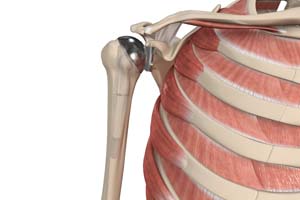Shoulder Surgery

Shoulder Anatomy
The shoulder is a ball and socket joint made up of three bones, namely the humerus, scapula and clavicle. The shoulder is the most flexible joint in the body enabling a wide range of movements including, forward flexion, abduction, adduction, external rotation, internal rotation, and 360-degree circumduction.
Thus, the shoulder joint is considered the most insecure joint of the body but the support of ligaments, muscles and tendons function to provide the required stability.
Common Shoulder Problems
Some of the common shoulder injuries that cause pain and restrict the movement of shoulders, include sprains and strains, dislocations, tendinitis, bursitis, rotator cuff injury, fractures and arthritis.
Treatment for Shoulder Pain
Early treatment is necessary to prevent serious shoulder injuries. The immediate mode of treatment recommended for shoulder injuries is rest, ice, compression and elevation (RICE). Your doctor may also prescribe anti-inflammatory medications to help reduce the swelling and pain.
Your doctor may recommend certain exercises to prevent stiffness and improve range of motion and strength. Passive manipulation and massage therapy to improve blood circulation and healing are also administered. Other techniques such as acupuncture, TENS, and ultrasound therapy may additionally be recommended.
Indications for Shoulder Surgery
Shoulder surgery is indicated to treat shoulder conditions when conservative treatment fail to relieve pain and disability.
To decide whether shoulder surgery is a good option for you, your surgeon will evaluate your condition thoroughly. Your surgeon reviews your medical history and performs a physical examination of your shoulder to assess the extent of mobility and pain. Imaging tests such as X-ray or MRI (magnetic resonance imaging) are ordered.
Preparing for Shoulder Surgery
Before surgery, your doctor will perform a complete physical examination to make sure you don't have any conditions that could interfere with the surgery or the outcomes. Discuss any medications you are taking with your doctor and your family physician to see which ones you should stop taking before surgery. If you are taking aspirin or anti-inflammatory medications or any drugs that increase the risk of bleeding, you will need to stop taking them one week before surgery to minimise bleeding. If you smoke, you should stop or cut down to reduce your surgery risks and improve your recovery. Report any infections to your surgeon. Surgery cannot be performed until all infections have cleared up.
Shoulder Surgeries
Shoulder surgeries may be performed through an open approach or minimal invasively.
An open shoulder surgery involves a large incision made across your shoulder joint. This may sometimes be necessary to achieve the best outcomes.
A minimally invasive approach uses an arthroscope, a thin lighted tube with a camera attached. The arthroscope is inserted into the surgical site through a small incision. The camera takes real-time images of the surgical site, which can be seen clearly on a monitor. One or two more small incisions are made to insert the surgical instruments to repair the damage in the shoulder.
The common shoulder surgeries include:
- Shoulder joint replacement: Replacement of both the humeral head and the socket with prosthesis
- Partial shoulder replacement: upper bone in the arm (humerus) is replaced with a prosthetic metal implant, whereas the other half of the shoulder joint (glenoid or socket) is left intact
- Shoulder reconstruction: reconstruction of torn shoulder soft tissues
- Biceps tendon repair: repair of a torn biceps tendon
